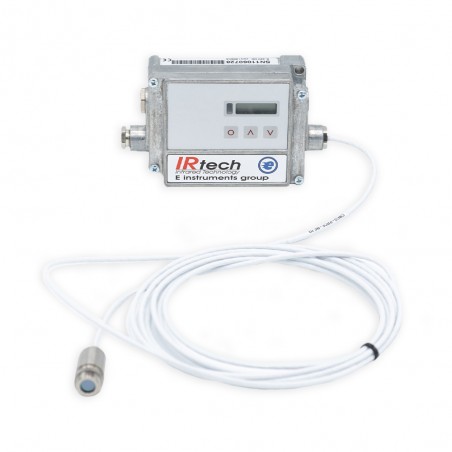





The IRtech Radiamatic IR14 series is made up of various models all sharing the split structure with compact head and remote electronics with display and keyboard.
The head uses an advanced sensor that allows you to work up to 180/250°C of room temperature without the need for cooling.
The remote control unit allows for simplified startup and maintenance. All settings, including emissivity, are available and can be changed with the integrated keyboard.
The modular expansion slot will allow you to add expansion cards such as USB, RS232, RS485, Profibus, Can, Ethernet digital interfaces and the card with two alarm relays. This allows you to avoid installing an additional indicator.
The advanced signal processor allows the use of functions such as averaging, peak picker, remote emissivity programming, ambient temperature compensation and many other functions.
Analog Input: external emissivity, ambient temperature compensation, trigger.